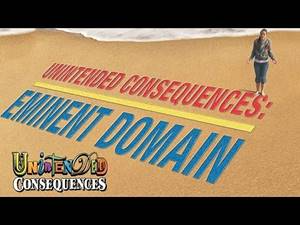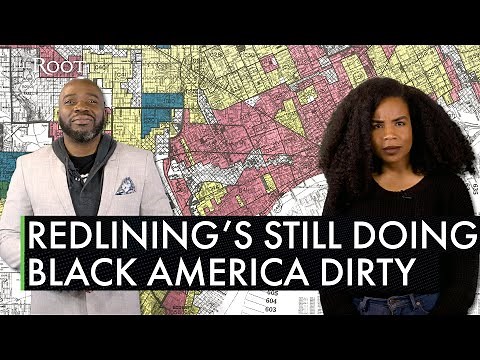**TLDR: Dr. Howard P Venable, the first Black physician faculty member at WASHU, was an accomplished ophthalmologist, who had his land in Creve Couer taken away from him and his family by the mayor in 1959 under the basis of racial segregation and eminent domain. It wasn’t until 2021 that the land was rededicated and renamed for Dr. Venable and his family. We know our short summary here will not do justice to the exceptional life of Dr. Venable as an activist, social justice advocate, and physician, but we hope that the resources here will prompt you to learn more and promote awareness and further action toward justice and equity. Visit the park and enjoy BBQ and cupcakes at nearby Black-owned businesses!**

It’s terrible how you could love a place and the place don’t love you
Venable family member
THIS WEEK: THE PHYSICIAN

Dr. Howard P Venable was a revered, accomplished, leading ophthalmologist (Homer G Phillips Hospital trained!), musician (played with Duke Ellington!), and the first Black faculty member at Washington University in St. Louis in 1958. He also served on the faculty of SLU!
In 1956, he and his wife saw an ad for Spoede Meadows, an up-and-coming housing development in the growing suburb of Creve Coeur, and paid cash for lots 10 and 11 with plans to build a home, three-hole golf course, and swimming pool. The family had been uprooted from their prior home due to the construction of Highway 40.
As the Venables, among other Black families, planned to move into Spoede Meadows, the community requested the mayor develop an advisory committee on parks. The committee met only once, but
the focus became finding a way to buy out the Venables from their land. Since 1935 the Federal Housing Administration had intentionally utilized redlining to raise the value of White neighborhoods over Black and minority neighborhoods.
Appraisers were advised to devalue integrated neighborhoods and direct funds, investors, and insurance companies away from minority neighborhoods. The city felt that under eminent domain the Venable land could be acquired for the purpose of a public park.
From 1956 to 1959, multiple strategies were devised by the Creve Coeur community to take the Venable land leading to the submission of a claim of racial discrimination to the Missouri Court of Appeals, which upheld the practice of redlining in Creve Coeur and other cities within the state. Dr. Venable submitted a plea for transfer/retrial of the case to the Missouri Supreme Court; however, this motion was overruled.
The holding of this Court is a holding in effect that a city government can condemn property purchased by the persons of the negro race solely for the purpose of depriving those persons of their constitutional right to live in the place of their choice.”
Dr. Venable
And so, the Venable’s house was condemned, and they lost their right to bring race discrimination claims after settling with the city for $31,000. They never settled in Creve Coeur and racial segregation practices continued. In 1962, Mayor Beirne of Creve Coeur stated, “My continual goal is effective, sound zoning practices to maintain an extremely desirable community with preservation of property values, along with improved and expanded services to the residents in an efficient manner at an economical cost.”
The land acquired by the city from the Venables became the city’s first park. At the time, the house of the Venables was halfway completed, and when the city acquired the land the structure was converted into a clubhouse and a baseball diamond and playground were built on the land. Redlining, eminent domain, and systematic discrimination and segregation greatly impacted the diversity of the Creve Coeur community for years to come. In 2000, only 4% of the community was Black or biracial, and that number today is less than 12%.
Unless you stand up and fight, you don’t have a case… My point was that I wanted freedom of choice. I wanted to be able to move anywhere that I had money and I felt I could move to, just like a white doctor with comparable financial savings could move anywhere he wanted.
Dr. Venable
See the attached PDF below to read more about his story
EMINENT DOMAIN & REDLINING
Dr. Venable and his family were not only targets of racist agendas within their community, but they were victims of community development strategies to promote segregation and oppression, such as eminent domain and redlining.
Eminent Domain – gives governments at any level power to take private property and convert it into public use. Learn more by watching the video below.

Eminent Domain
In 2005, the US Supreme Court took on the most important property rights case in the history of our country. The Kelo case pitted homeowners in New London, CT against city officials who wanted to use the power of eminent domain to redevelop the area in the hope of creating jobs and increasing tax revenues…
Redlining – a shorthand term for many types of historic race-based exclusionary tactics in real estate that have driven the development of racial segregation seen in many US cities today. Learn more at the links below.

What is Redlining? | New York Times
The government’s racist theory — based on popular pseudoscience of the era — was that the presence of any population of Black residents was a sign of impending property value decline.
Housing Segregation and Redlining in America: A Short History | Code Switch | NPR
In 1968, Congress passed the Fair Housing Act that made it illegal to discriminate in housing. Gene Demby of NPR’s Code Switch explains why neighborhoods are still so segregated today.


How Redlining Shaped Black America As We Know It | Unpack That
Almost every quantifiable indicator of white supremacy— all lead back to the government-sanctioned policy of redlining. Here’s how the racist legacy of redlining still works today.
Redlining impacts on life expectancy
Read this recent data from WASHU to understand the long-lasting impacts
Research reveals how redlining grades influenced later life expectancy – The Source – Washington University in St. Louis
Researchers had previously identified a relationship between redlining and population health…

Perspectives on racism in STL
Watch this mini-documentary on perceptions of race and racism in STL

Racism in St. Louis
John and Matt went around various parts of St. Louis city in order to ask individuals about their perception of race and racism in their great city…
AN ATTEMPT TO RIGHT HISTORY
In September 2021, the land that was previously called Beirne Park (named for the mayor under who the land was acquired), was renamed and rededicated. The Venable family additionally wanted to create a memorial in honor of Dr. Venable, an annual day of recognition, a financial contribution to WASHU in his and his wife’s name, and assistance for people of color buying land in Creve Coeur; however, these reparations have not yet come to fruition. It took 2 years for the task force to achieve the rededication of the park.
Decades after a Missouri town seized a Black doctor’s home, his relatives sought to reclaim his land — and his story – PBS NewsHour
CREVE COEUR- At the end of a winding road in Creve Coeur, just west of St. Louis County, a park now bears the name of Dr. Howard P Venable, the Black ophthalmologist who purchased the land as his…

SUPPORT BLACK-OWNED BUSINESSES

The Park: Dr. H. Phillip Venable Memorial Park is the city’s first park, originally dedicated in June 1961, and is located at 10630 Country View Drive.
Gobble Stop Smokehouse: A family-owned and operated business that started with an extraordinary recipe for turkey tips in 2009.


Cupcake Fetish: Founder Yolonda Turner established Cupcake Fetish in May 2012. The home based business then grew to incorporate custom cakes and other assorted sweet treats.
The Collective Yoga: The COLLECTIVE STL is the only donation-based yoga and wellness studio in the state of Missouri

Best,
The DEIA Committee